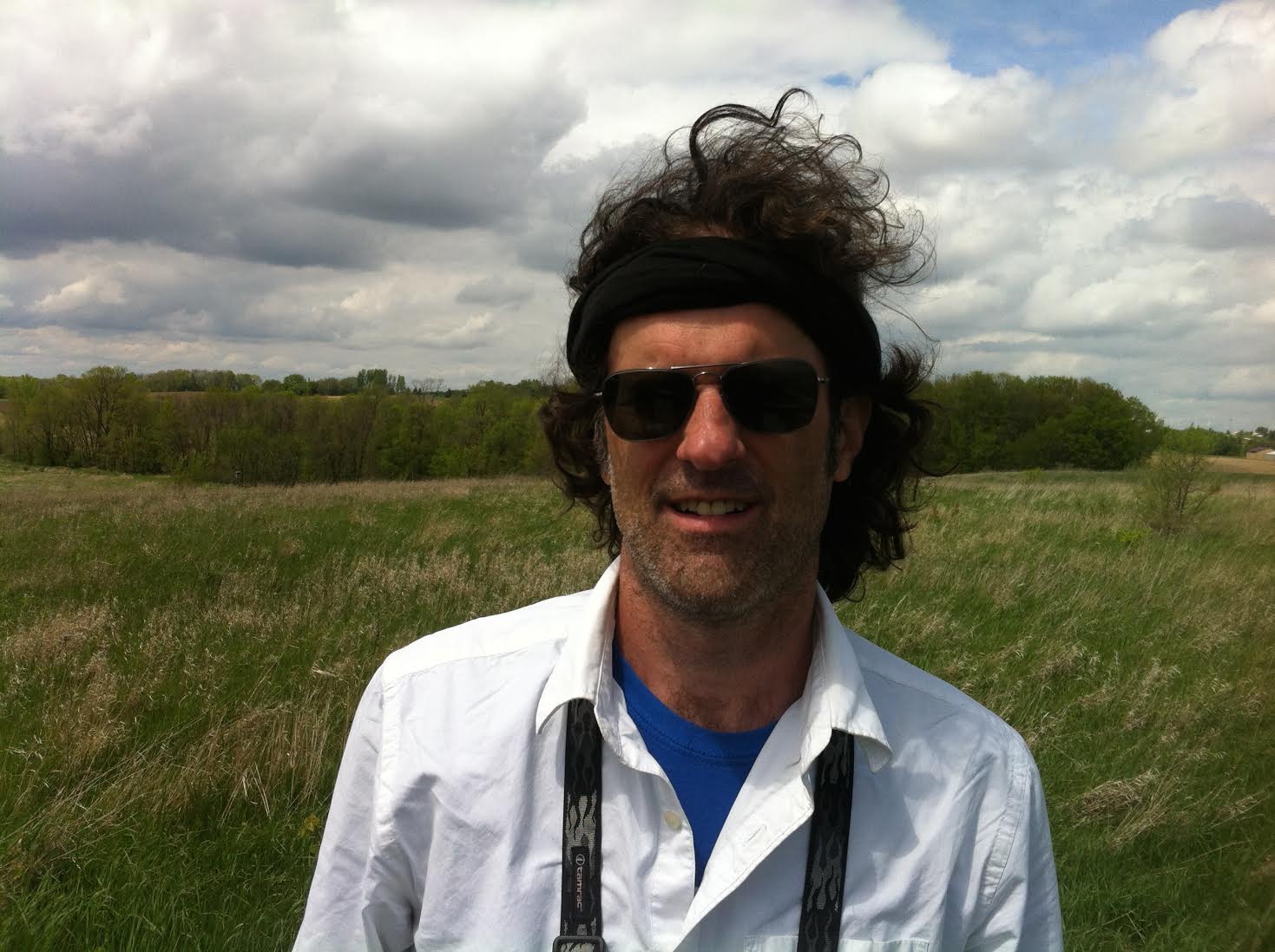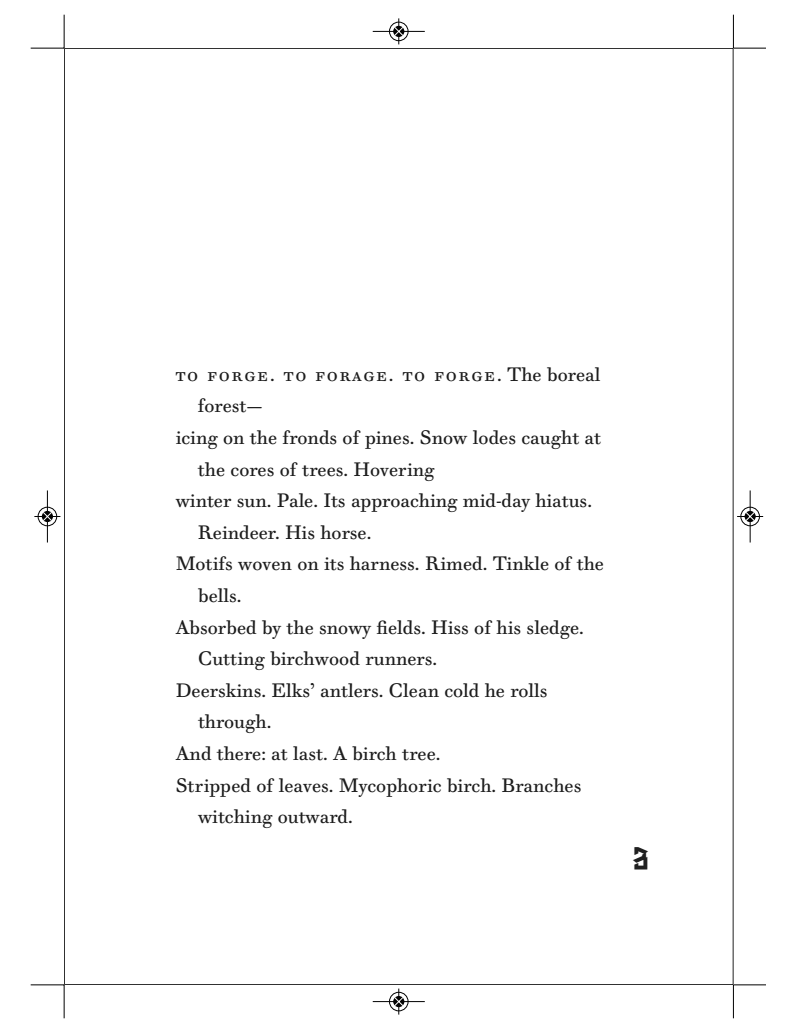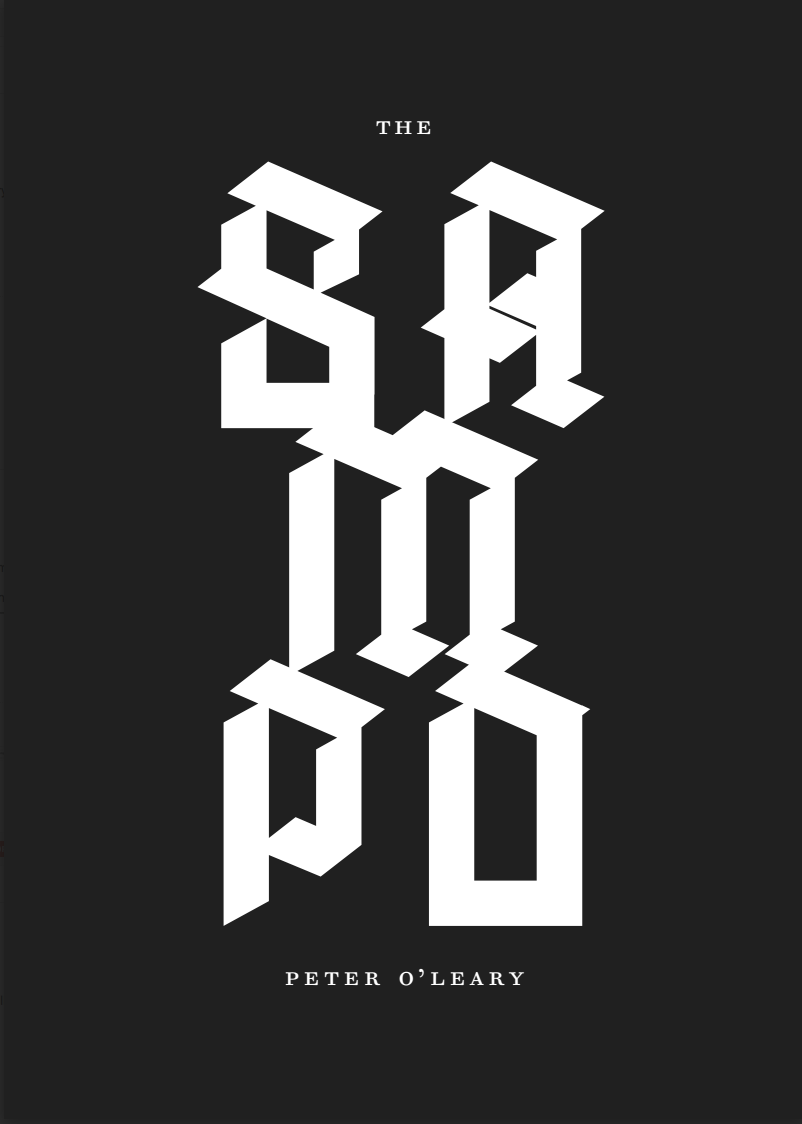Peter O’Leary’s books of poetry include Watchfulness, Depth Theology, Luminous Epinoia, and Phosphorescence of Thought. He teaches at the School of the Art Institute of Chicago (SAIC) and the Committee on Creative Writing at the University of Chicago, and is director of the small poetry press Verge Books with John Tipton. O’Leary has two books arriving this year — Thick and Dazzling Darkness: Religious Poetry in a Secular Age, and The Sampo, a reimagining of Finland’s national epic, to be published by the Cultural Society in April.

Image courtesy of the artist
1) Could you describe the process of writing your upcoming book of poetry, The Sampo?
For this book I came up with a new technique, really a new compositional strategy. I wanted to create a line of poetry or a poetic unit that did not use verbs, but acted like a verb. This meant using a lot of participial phrases, a lot of -ing words. The main character of the poem is a wizard named Väinämöinen, who’s the hero of the Finnish national epic, The Kalevala. Instead of having him feel something, I’d write “Väinämöinen, feeling ancient,” and things like that. Sometimes, I would pile these poetic units together to make a longer line. Without any actual verbs, each thing is like a flash. It’s like the cell in an animation, and when you play them together, the whole thing comes to life.
I was inspired by two examples in writing The Sampo. To a smaller degree, I was inspired by Christopher Logue’s poem War Music, which is his rewriting of Homer’s Iliad as an Imagist epic. To a greater extent, I was inspired by the example of a poet named Thomas Meyer, who in the last fifteen years has been making use of a gesture in which he’ll break up the breath and thought units within individual lines using the period. You’d think that it would create obstacles, but instead it builds the tension in the line. Each phrase functions then as a unit of action with accumulating intensity.

Image courtesy of the artist
2) You’ve recently published some translations of Charles Baudelaire’s poetry. How does translation influence the way you approach your own work?
I think that translation is definitely influential. In fact, this poem of mine, The Sampo, really started as a kind of translation. Or, at least, that was the initial vision of it. But I quickly realized it was my own thing.
Translation is an essential element of the work that I do. With Baudelaire, having admired his work for a very long time, I discovered that I was finding a kind of sympathy to his outlook, even though my work doesn’t superficially resemble Baudelaire’s work at all. The sort of decadence that characterizes his work thematically, there’s not a lot of that in my work, but what I found is that at the core of Baudelaire’s decadence is his belief in damnation. He believed that you could be damned. I’ve got three more versions of Baudelaire poems that I’ve produced in the last couple months. I think of them less as translations than as cover versions.
3) Your forthcoming book, Thick and Dazzling Darkness: Religious Poetry in a Secular Age, explores modern writers of religious poetry. Do you see a growing trend of poets writing about religious topics, or has this type of work been overlooked in the recent past?
I think it’s more likely to have been overlooked, but there are poets writing nowadays for whom the topic is important. With the advent of Modernism, there came a real suspicion toward religion and religious material — which in English-language poetry had predominated, at least as far as subject matter is concerned, for centuries. There were still poets who were religiously driven, but not in any sort of professed way. But that shifted: some of that definitely continued to happen among high Modernist poets, and certainly among some late Modernist poets as well. And those are some of the people that I write about in the book. I write a little bit about H.D., one of my favorite poets, and I also write about T.S. Eliot, who is probably the guy that disproves the generalization. Then, at least in terms of avant-garde or experimental poetry in the US, beginning mid-century, it really shifted over to kind of a materialist outlook. In that sense, the suspicion toward religion turned into active antagonism. As a result, you find very few poets who would certainly profess religious belief, or anything like it, and that’s kind of held sway, I think, since then.
Increasingly, I definitely find younger poets who are much more sympathetic to talking about religion without feeling that it needs to be criticized. Similarly, you will find younger poets who are comfortable professing religious belief. In the book I’m concerned, as far as subject matter, with poetry professing Christian belief, because that’s the dominant mode that became scrutinized and regarded with antagonism. Whereas, in the U.S., at least, that has not been the case with, say, Jewish-American poets, or poets who profess a Buddhist outlook. But, like I’ve said, that’s changed. Because I am identified as a religious poet and people know that my religious outlook is Christian — that I’m a Catholic — I get contacted regularly by poets, usually younger poets, who are interested in religion. They come to poetry from or through religion, and they’re happy that there’s someone else out there.

Image courtesy of the artist
4) Where do you like to go in Chicago?
The first neighborhood I lived in in Chicago, because I moved here to go to college at the University of Chicago in 1986, was Hyde Park. Hyde Park remains my favorite place in Chicago. Specifically a couple of places: One of them is the Seminary Co-op Bookstore, one of the great bookstores in North America … in the world! And then Promontory Point, the park that juts out into Lake Michigan at 55th St. I think that’s one of the greatest places in all of Chicago.
5) Who have you been reading lately?
I have to admit, an important part of my reading diet comes from teaching classes. In terms of the poetry-related material that I’ve been looking at that’s been firing my imagination, I’ve been teaching myself Anglo Saxon so that I can read Beowulf. I’m not in the position to immerse myself in it, so I pick it up when I can. I’ve also been reading Pope Francis’ encyclical, Praise Be to You; it’s the one that’s about the environment, “On Care for Our Common Home.” I’m finding that incredibly inspiring. And I just picked up a book again that I read many years ago, and have recommended to people since. It’s a long poem about the Great Lakes by a poet named Philip Church, called Furnace Harbor. It was published in 1988 by the University of Illinois Press, and it’s about the freighters moving around the Great Lakes with iron ore. I’m sure it’s out of print, and his name is probably fading from memory, but Church was an excellent poet. It’s worth tracking down.





















